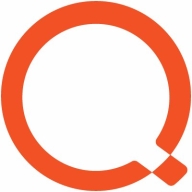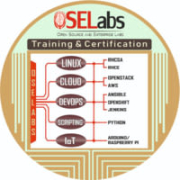

Red Hat Ansible Automation Platform and Quest KACE Systems Management Appliance are two platforms competing in the automation and management space. Ansible seems to have an upper hand in terms of automation and orchestration efficiency, whereas KACE excels in asset and endpoint management capabilities.
Features: Red Hat Ansible Automation Platform is recognized for its agentless architecture, ease of use, and comprehensive documentation. It excels in managing complex configurations across varied environments and supports numerous modules and roles. Quest KACE Systems Management Appliance is noted for its asset and patch management capabilities, providing a comprehensive overview of device environments and includes tools for software deployment and centralized management integration.
Room for Improvement: Red Hat Ansible Automation Platform could enhance scalability when handling a large number of servers and could benefit from improved GUI and documentation. There is a demand for broader module support and better integration with existing tools. Quest KACE Systems Management Appliance needs improvements in scalability and ease of image deployment, in addition to a more intuitive interface. Simplifying asset management and enhancing patch management and administrative functions are additional areas for development.
Ease of Deployment and Customer Service: Red Hat Ansible Automation Platform offers flexibility for hybrid, cloud, and on-premises deployment, supported by a strong community and technical support for critical issues. Quest KACE Systems Management Appliance supports primarily on-premises deployments, supplemented by cloud capabilities, and offers robust technical support, though users suggest streamlining deployment processes and user guidance.
Pricing and ROI: Red Hat Ansible Automation Platform provides both free and enterprise options, with significant cost savings evident in its open-source version, making it cost-effective for automation tasks. Quest KACE Systems Management Appliance is priced per endpoint, which can be expensive for smaller setups, but its extensive capabilities are seen as justifying the investment. Both platforms yield tangible ROI through time savings, improved efficiency, and resource utilization, with Ansible's pricing favoring larger enterprises more significantly.
The return on investment is seen in the quick access to information, good inventory management, and efficient systems management.
I would rate the customer support for Quest KACE Systems Management Appliance (SMA) as a 10.
The customer service is very good, providing quick customer support in Spanish.
The Ansible sales and technical support services need significant improvement.
The product is very scalable as it supports 10,000 thousand endpoints with just one appliance.
We have outgrown the size of one KACE appliance and are now running two.
Ansible can face scalability issues, such as limitations when trying to scale up infrastructure.
The stability of Red Hat Ansible Automation Platform is excellent, deserving a 10 out of 10 rating.
Currently, we have to go into each org to deploy applications when we need them all across the university.
The user interface needs improvement as customers have mentioned they do not like the interface since it is not an SMA-based interface.
The dashboarding capabilities should be improved by bringing CMP (Cloud Management Platform) into Red Hat Ansible Automation Platform.
More library support for microservices architecture and Kubernetes would be helpful.
More detailed dashboards would be beneficial because there is a lack of dashboards on Red Hat Ansible Automation Platform.
The pricing is in the middle range of the market, not too expensive but not the cheapest either.
My experience with pricing, setup cost, and licensing for Quest KACE Systems Management Appliance (SMA) is that, hands down, it beat all of the others in simplicity and pricing.
The pricing is high, and since I'm not using all functionalities, it would be better if the price depended on the functionalities used.
The cost of combining Red Hat Developer Hub and Ansible is extremely high, which presents a significant challenge with the Red Hat product.
Scripting has saved us hundreds of hours over the years when patching these vulnerabilities compared to how we did it before.
The most valuable features include simplicity, which makes systems management easier and faster, especially for device management.
The automation capabilities streamline deployment processes, providing reliability and reducing manual intervention and errors.
Red Hat Ansible Automation Platform is easy to integrate.
It makes it simple to develop Ansible playbooks and roles, which aids in simplifying my daily administrative tasks.


Quest KACE Systems Management Appliance is a comprehensive tool for managing IT endpoints. It facilitates asset management, software distribution, and endpoint tracking while offering remote access capabilities and a centralized help desk.
Quest KACE Systems Management Appliance is designed for organizations that need efficient endpoint management. It offers a range of features like inventory tracking, automated patch management, and ticketing. By integrating with remote access tools such as Bomgar, Quest KACE helps reduce manual tasks involved in managing software updates and system deployments. Although it faces challenges in scalability and requires improvements in integration and reporting, it remains a versatile choice for asset tracking and endpoint administration.
What are Quest KACE SMA's key features?
What benefits should users consider?
Quest KACE Systems Management Appliance is implemented across industries for managing IT assets and endpoints, particularly where remote management and compliance are critical. It's employed in healthcare, education, and government sectors for efficient patch management, inventory control, and software deployment, aiding organizations in managing security accreditations and centralizing help desk operations.
Red Hat Ansible Automation Platform is a powerful network automation solution that allows organizations to handle every aspect of their application launch process within a single product. It enables users to share their automations so that teams within an organization can collaborate on various projects with ease. Ansible Automation Platform is designed to be used by all employees involved in the network automation process.
Red Hat Ansible Automation Platform Benefits
Some of the ways that organizations can benefit by choosing to deploy Red Hat Ansible Automation Platform include:
Red Hat Ansible Automation Platform Features
Reviews from Real Users
Red Hat Ansible Automation Platform is a highly effective solution that stands out when compared to many of its competitors. Two major advantages it offers are its automation manager and its comprehensive centralized GUI-based management interface.
MD J., a solution architect at STBL, says, “The automation manager is very good and makes things easier for customers with multi-cloud platforms.”
Aankit G., a Consultant at Pi DATACENTERS, writes, “We like the GUI-based interface for the tower. Before, we only had a command-line interface to run all the Ansible tasks. Now, the Ansible tower provides the complete GUI functionality to run, manage, and create the templates and the Ansible jobs. This includes the code and YAML file we can create. The GUI interface is the added advantage of this solution, including some integration with the different plugins.”
We monitor all Remote Monitoring and Management (RMM) reviews to prevent fraudulent reviews and keep review quality high. We do not post reviews by company employees or direct competitors. We validate each review for authenticity via cross-reference with LinkedIn, and personal follow-up with the reviewer when necessary.